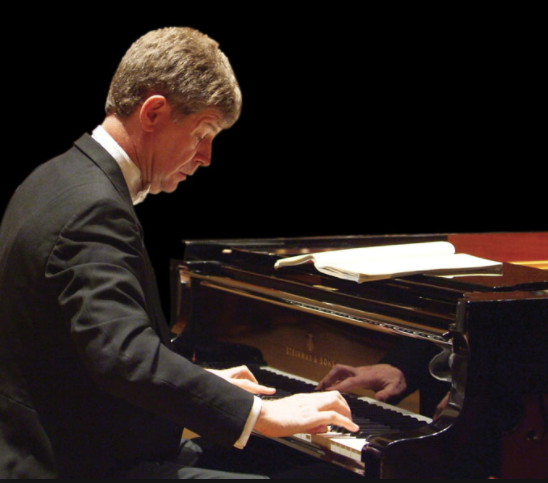SubCulture presents Ian Hobson: Sound Impressions: The Piano Music of Claude Debussy & Maurice Ravel- 4th in series
Ian Hobson, piano
SubCulture, New York, NY
February 28, 2018
Ian Hobson continued his six-concert epic presentation of the complete solo piano works of Debussy and Ravel with his fourth installment. By now (I’ve covered the first and third), I recognize repeat attenders in the audience, and plenty of fresh, young faces, due partly to the “edgy” downtown location, no doubt. I wish more people could hear this immense achievement, because while household names, Debussy and Ravel aren’t really programmed as often as one would hope.
Mr. Hobson’s opening work, Debussy’s resolute but sad little Berceuse héroïque, allowed me to ruminate on the terrible toll exacted by World War I. France lost at least 1,320,000 men in their prime, with a quarter of those lost in the first months of the war. Ravel, despite repeated unsuccessful attempts to enlist, finally joined the Thirteenth Artillery Regiment as a lorry driver in March 1915 at age forty (!), serving for two years—afterward he was never the same, either in physical or mental health. Debussy, already ravaged by the cancer that would take him in 1918, became intensely nationalistic, signing his works “Claude de France,” and contributing many short, bleak works to the many charity efforts that were pleading for funds. Thus, the Berceuse, destined for a Belgian war effort.
Mr. Hobson immediately relieved the gloom with a stylish peek into several of Debussy’s unjustly neglected early works: Valse romantique, Mazurka, and Nocturne. While each of them contains some tidbits of the progressive harmonies Debussy would become famous for, they lie squarely in the Romantic genre field, as one might expect from a student of a woman named Marie Mauté de Fleurville, who claimed to have studied with Chopin.
Mr. Hobson then gave us Ravel’s true first piano composition (though unpublished until 1975), the Sérénade ‘grotesque’ from 1893. The guitar-like pizzicati and other brief melodic figures would be put to much better use in the Alborada del gracioso (heard later on this program). Mr. Hobson was stylish in it, but did ignore the indication, so unusual for Ravel, très sentimental.
Then came one of Ravel’s masterpieces, the five-piece set Miroirs, in which Ravel sought to evoke not things themselves, but their reflections. Each piece is dedicated to a fellow-member of the avant-garde Apache artist group. Here, Mr. Hobson’s extraordinary fluency gave what was for me the most successful performance of the evening. He is able to “put things together,” the only downside being that many details get lost. Nevertheless, all the movements were great (including the astonishing, callous-building, double-third and double-fourth glissandi of Alborada), with the exception of La Vallée des cloches, which was way too fast! In Ravel’s conception, there was no valley, only the varied contributions of the many Paris church bells tolling at noon on a sultry day.
I hoped not to end this review on a down note, but Mr. Hobson’s concluding presentation of Debussy’s first book of Préludes was the most unsatisfying, despite a few jewel-like refined moments (La Danse de Puck was near perfect). His penchant for rushing disturbed the mysterious calm that underlies many of the works, and there was definitely a shortage of the pp and ppp dynamics, without which Debussy can seem like a terrible mistake. Particularly, he almost never observed when there was a crescendo immediately followed by a subito (sudden) pp. There was a great deal of rhythmic alteration too, in short note values. In this recital, Mr. Hobson used the scores for all his performances, I don’t object to that at all, but it seemed to lead to a kind of sight-read quality, but of course I know he wasn’t sight-reading. Putting together a marathon series like this is truly daunting. I did think that two preludes, La Fille aux cheveux de lin and La Cathédrale engloutie, were the best. I was surprised that they were these two. The others were rather manhandled, with rough patches intruding on one’s contemplation.
I’m sure the next two recitals will be well-attended and wonderful.

